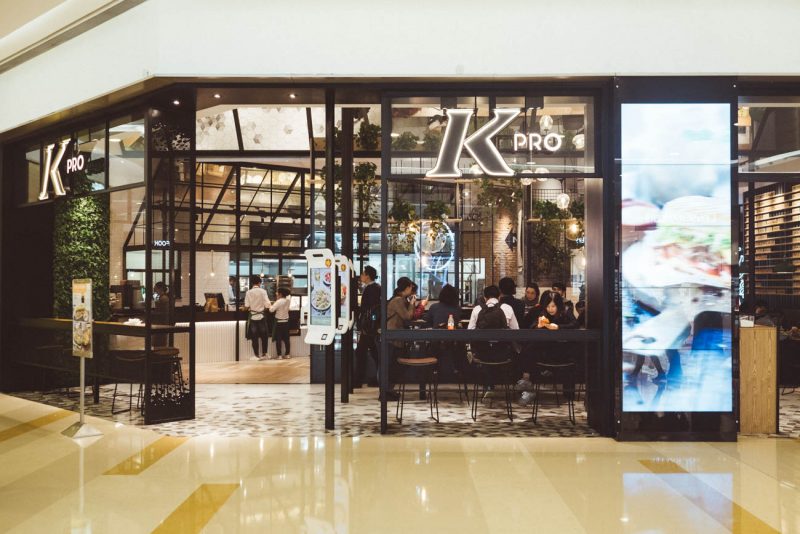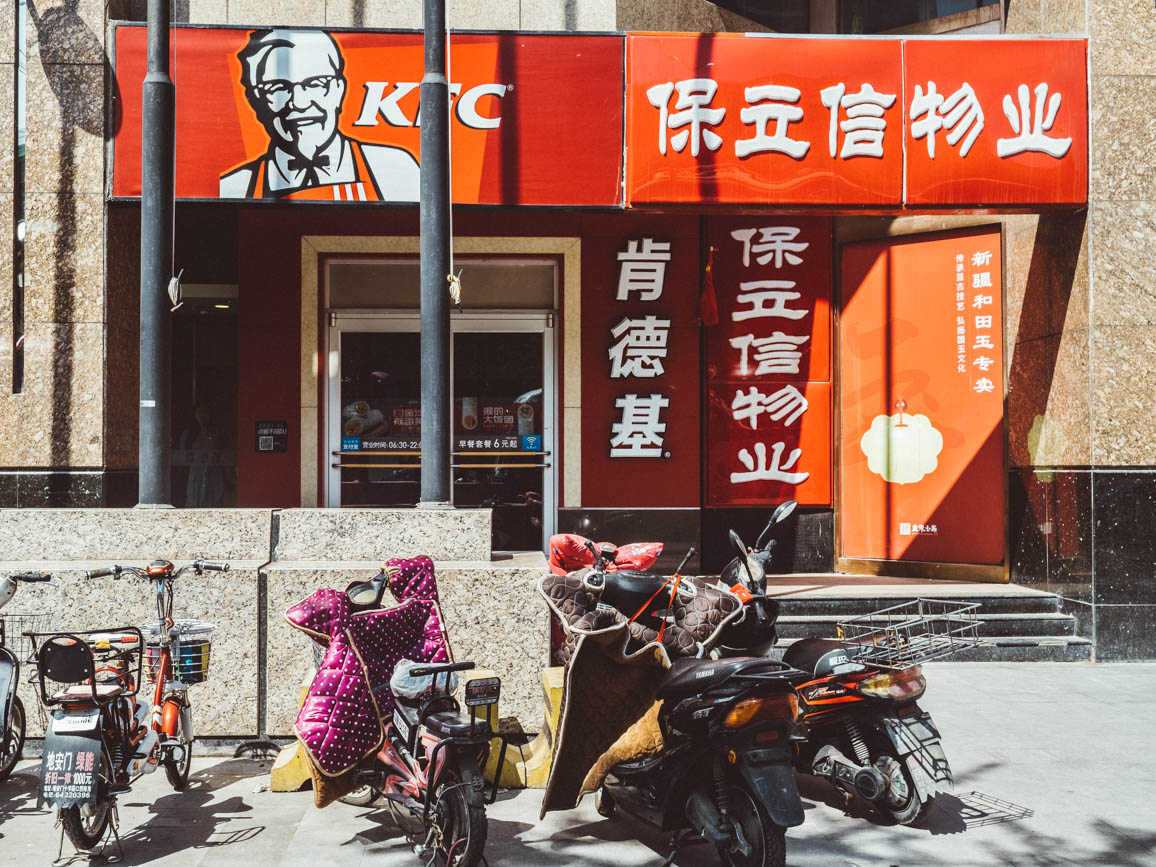- KFC is by far the most popular fast food chain in China.
- Key to KFC’s success in the country has been catering its menu to local tastes.
- I tried a number of dishes at a KFC restaurant in Beijing and found the food to be tastier and fresher than its American counterpart.
With more than 5,000 restaurants in 1,100 cities in China, KFC dominates the country’s fast food landscape.
KFC was the first American fast food chain to launch in the country, opening its first China branch in 1987. It quickly became a symbol of the country’s rapidly reforming economy and newfound openness to the world.
The three-story, 3,600 square-foot restaurant was KFC’s largest branch – with seating for 500 people – and just a short walking distance from Beijing’s Tiananmen Square. The restaurant was an instant success, with customers lining up outside the restaurant for months on end after it opened.
As of 2016, KFC still holds 11.6% of the market share in China, according to Euromonitor, far ahead of McDonald’s 5.6%. McDonald’s only has around 2,500 restaurants.
Key to KFC's success in the country has been its aggressive catering to Chinese tastes, with menu items that will never make their way to US restaurants. While KFCs in China serve fried chicken, they also serve a variety of local dishes like egg tarts, congee (rice porridge), and the "Dragon Twister."
While KFC, and its parent company Yum China, suffered a number of hits recent years thanks to a tainted meat scandal in 2014 and problems with avian flu in 2016, the chain has continued to push aggressively in the market. Last year, it launched KPRO, a health food-focused concept restaurant, in Hangzhou, China to test the country's growing interest in healthy eating.
I decided to give KFC a try on a recent trip to China to see what it was like.
With over 5,000 branches, KFC is the most popular fast food chain in China. I headed to a branch in Beijing not far from Tiananmen Square.
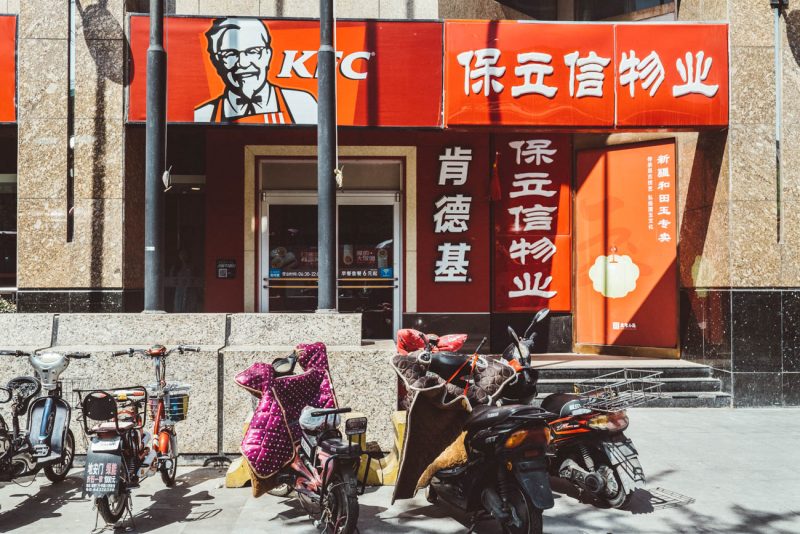
China is littered with fast, cheap food from street vendors. When KFC first opened in China, its American-style sit-down restaurants were seen as a luxury. For many Chinese consumers, the chain guaranteed cleanliness and freshness, an image that has taken a hit in recent years.
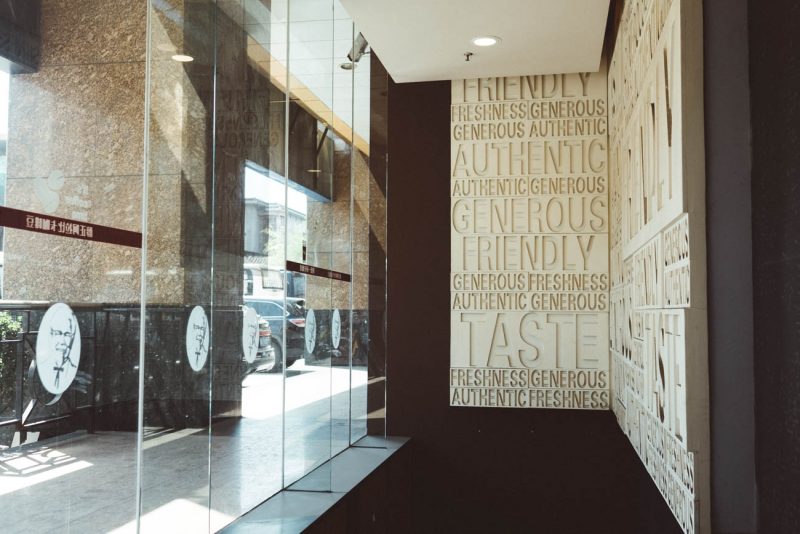
At the time, KFC was seen as an "exciting, unique, and brand-new experience never before encountered… like taking a tour of America, with all its connotations: political, cultural, time, and space — real or imaginary."
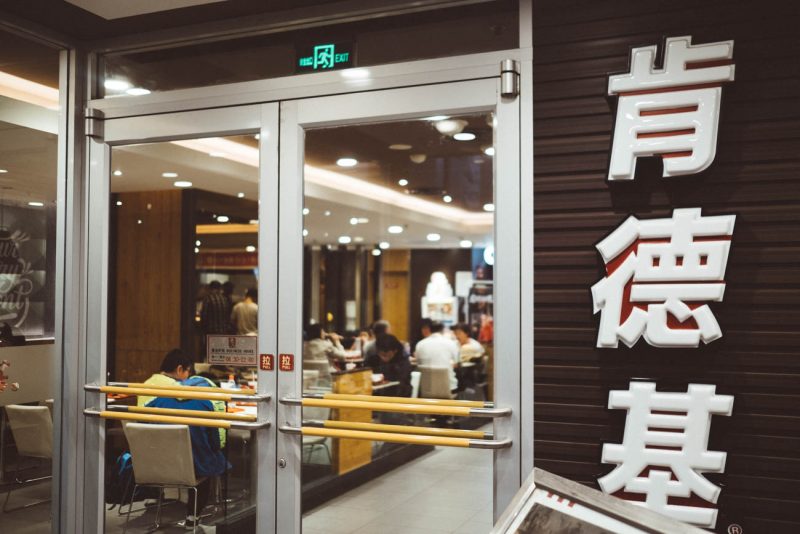
Source: KFC in China
As Chinese consumers have matured, KFC has become less of a novelty than it once was. But it is still very popular. When I visited on Sunday at lunchtime, it was packed.
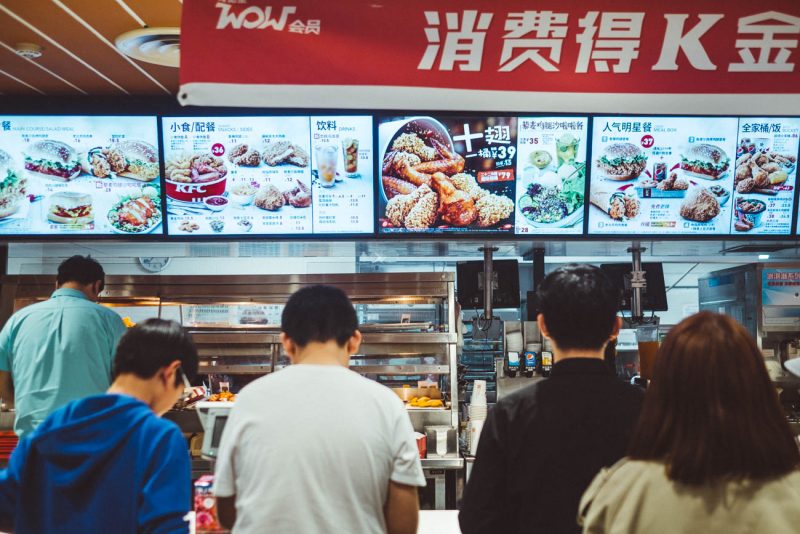
KFCs were often places for youth and the rising middle class to hang out. It still had that feel when I visited. There were many families casually eating lunch, teenagers using the restaurant as a hangout spot, and a couple college students working on homework.

Most people weren't waiting in line for the counter like I was. Most were instead scanning the QR code on the wall and ordering and paying on their phones. QR codes are ubiquitous in China. Restaurants often don't even have paper menus anymore.

The cashier fished out a laminated English menu for me from below the counter. There were a ton of unfamiliar options, including a shrimp sandwich, matcha ice cream, congee, and soy sauce wings.

I saw a promotion for these sushirritos and asked if I could give them a try. Unfortunately, the sushirritos and the congee are both only for breakfast. Alas, next time.

I over-ordered. But I promise, I did it for you all, the readers. I ordered: a 10-piece wing bucket (five soy sauce, five fried), a Dragon Twister, a chicken-and-seaweed rice bowl, an egg tart, a chicken salad, peach oolong tea, and something called nine lives juice drink.
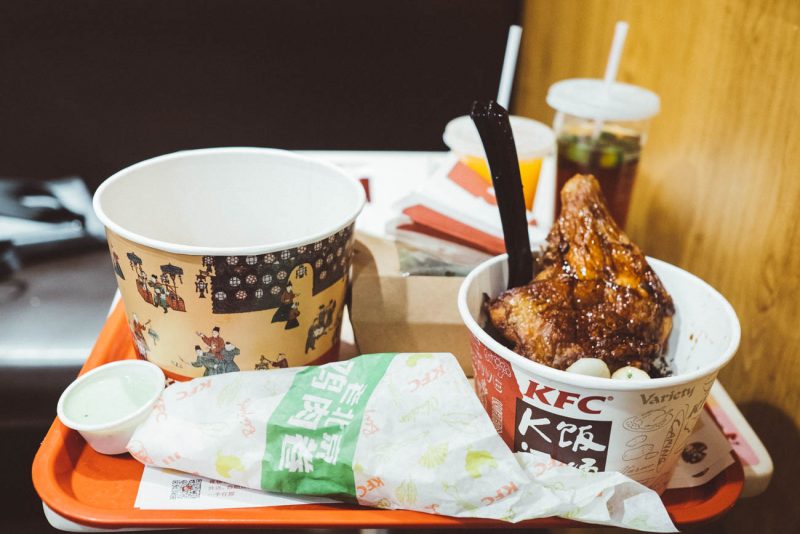
I started off with KFC's tried and true, the chicken. The soy sauce wings were crispy and fried well, with no breading. The sauce was just a light glaze, enhancing the crispy skin and giving a not-overpowering salty-sweet flavor. The meat was tender and moist.

Next, I tried the fried chicken. The breading was fairly similar to KFC fried chicken in the US, though the pieces were smaller. But when you bite in, there is a peppery, spicy kick. I usually layer on condiments. I didn't touch one with this chicken. There was plenty of flavor and it was far less greasy than KFC fried chicken in the US.

It's worth noting the marketing materials on the bowls here. They were all done with classic Chinese figures.

The nine-lives drink was a cloyingly sweet mix of pineapple and orange juice. I found its sweetness unusual. Most Chinese drinks and desserts are notoriously very lightly sweetened.

I decided to order this because after three weeks in China I had yet to eat a salad. The pan-fried chicken was tender and juicy. I was expected dry and cold, like most salads. There was a sprinkling of quinoa and corn, which seemed more like an afterthought. The bed of mixed greens was serviceable, nothing special, while the dressing was a sickeningly sweet tart Apple dressing. It was very out of place, as were the two scoops of mashed potatoes.

I was most excited for the Dragon Twister: fried chicken prepared ala Peking Duck, in a thin pancake with spring onions, cucumbers, and sweet bean sauce. It did not disappoint. The pancake was thin and flaky while the bean sauce was pretty close to authentic. The spring onions added a crunchy freshness. I scarfed this down.
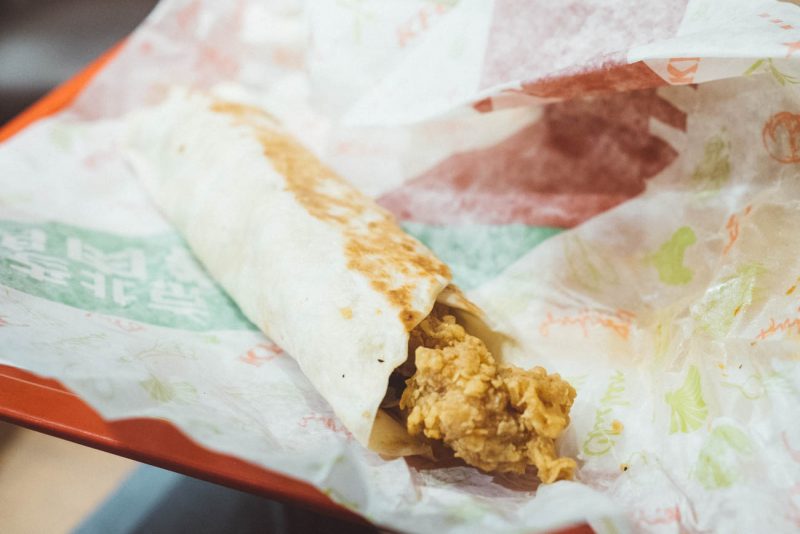
The chicken bowl was most similar to Japanese donburi. The rice underneath is seasoned with a little soy sauce and seaweed, which gives it a salty, fishy flavor — a popular taste in Asia. The chicken, bone-in leg and thigh dark meat, was flattened so much it looked almost like a steak. The chicken was covered in a coated in a Teriyaki-like glaze that was much heavier than the wing sauce. Surprisingly, the skin was still crispy. The meat tasted very fresh.

While KFC offered a ton of desserts, I opted for the humble egg tart, which comes with your combo instead of a biscuit. This might have been the best egg tart I've had in China — and I've had it in Hong Kong and Macau, where the dish originates. A sacrilege, I know. The pie crust was perfectly flaky, while the eggy middle was creamy with a light glaze of sugar over the top.

The peach oolong tea was the clear winner here. It was very lightly sweetened. Overall, KFC in China was light-years better than in the US. The food tasted fresher, less greasy, and more thought out. Usually after eating KFC, I feel bloated and like I'm oozing oil. I felt great after eating KFC in China.

Last year, KFC opened a new concept restaurant in China. KPRO is focused on providing healthy food (no fried chicken) and even has facial-recognition for payment — but that's another story.
